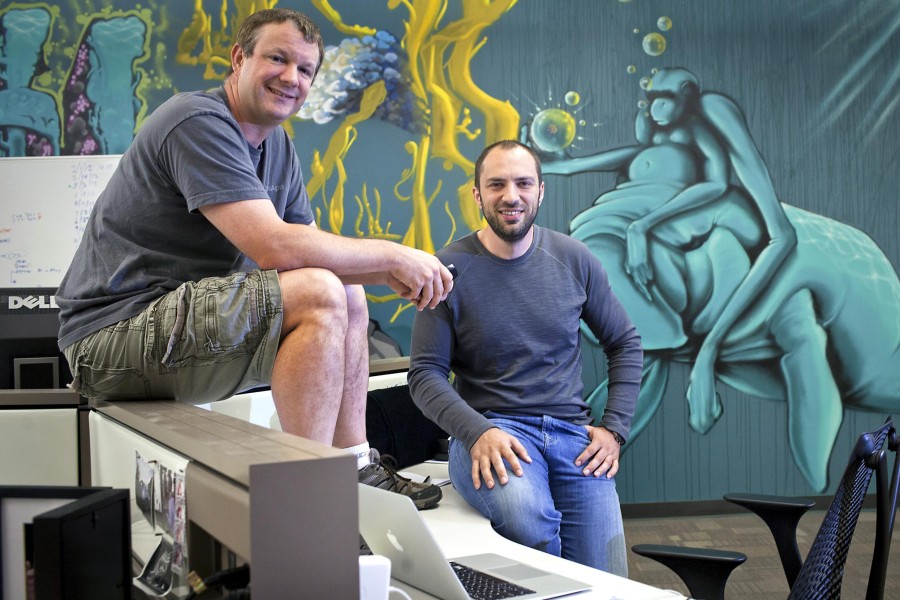The case of WhatsApp
The story of WhatsApp is about a start-up that was born thanks to the project of two entrepreneurial ex-Yahoo! employees, Brian Acton and Jan Koum. They had an idea and decided to test it. Initially, to fund their project they asked Family, Friends and Fools (the three F). They started with an application for iPhone, then they developed a Blackberry version, then Android and finally one for Windows Phone. Two years after launching their project, in 2011, WhatsApp received an additional round of funding by Sequoia Capital, a well-known venture capital firm.
So, what is a disruptive innovation? The common definition is that it is an innovation that breaks all the old economic dynamics of market using alternative economical, commercial and technical interpretations. This suddenly opens new markets, creates new jobs and it ultimately generates opportunities, while displacing existing markets and old technologies. Simple, yes, but there is more to it.
It is not just a new technology that brings a disruptive innovation to a market but also a new business model. Very often, as is the case of WhatsApp, it is the business model and the way a company exerts its potential on its own market that determines a disruptive innovation.
It is not just a new technology that brings a disruptive innovation but also a new business model
In the case of WhatsApp the elements of the “innovative” business model were:
– Simplicity
– Cost-effectivity
– Accessibility
– Low cost
WhatsApp is not the only internet-messaging platform in the market, several competitors have followed it, using, inter alia, the freemium model, whereby the product is offered free at first. WhatsApp was a early adopter of this method. It certainly gave them a great boost in terms of virality. If a friend does not have it, somebody will advise him to get it, he downloads it, and the user base increases. Market penetration and expansion were left on the shoulder of its users.
A central point of the WhatsApp business model is the simplicity
The cost structure is lean, the value proposition is very strong and concentrated on the end user experience. This leads to strong scalability and virality, and finally to a strong brand name.
Another important characteristic of the WhatsApp Messenger is that it is completely free of advertisement. Indeed, an official communication stated that WhatsApp is and will always remain a simple application without cluttering features that could distract the customer. Time will tell if they will remain true to themselves or they will eventually display adds. Another one of Facebook companies, Instagram, is already deploying advertisement.
Victim of the innovator’s dilemma
The Innovator’s Dilemma theory argues that many successful companies operate in the technology reality. Meanwhile the industry is structurally unable to perceive the threat posed by disruptive technologies and suffers from the rigidity of corporate decision-making that would prevent the management from adopting timely change in their strategy.
That is what has happened to the mobile network operators (MNOs for short). They were too anchored to the concept of SMS. They have not been able to predict the evolution of technology and the consequences in the evolution of the exchange of text messages.
WhatsApp had several advantages in the race with its competitors. These are the user base, the brand name, switching costs, the fact that it offers a simple and effective product. With respect to competitors, and in particular with WeChat: its objective is plain simple, keep being ahead.
WhatsApp has a first mover advantage, it is mostly free and offers a free messaging system that allows also for multimedia sharing – so that it has been able to go viral. Most users know that after 12 months they will have to pay to use the application, but one year is far away. Meanwhile WhatsApp has becomes well known and is the main communication mean of millions of people.
After 12 months WhatsApp rings the bell asking for 0.89 EUR / $0.99 for its license. At this point the users are very likely to pay, because the application is so well established that not using it would cost more than leaving it. Leaving the app means losing all the advantages that it gives. The price is low, much lower than 10 SMS.
Are you interested to join the disruptive innovative business world? To help out with this I suggest a book: “ The innovator’s guide to growth”. It will help you to take the steps necessary to benefit from disruption — instead of being eclipsed by it.










